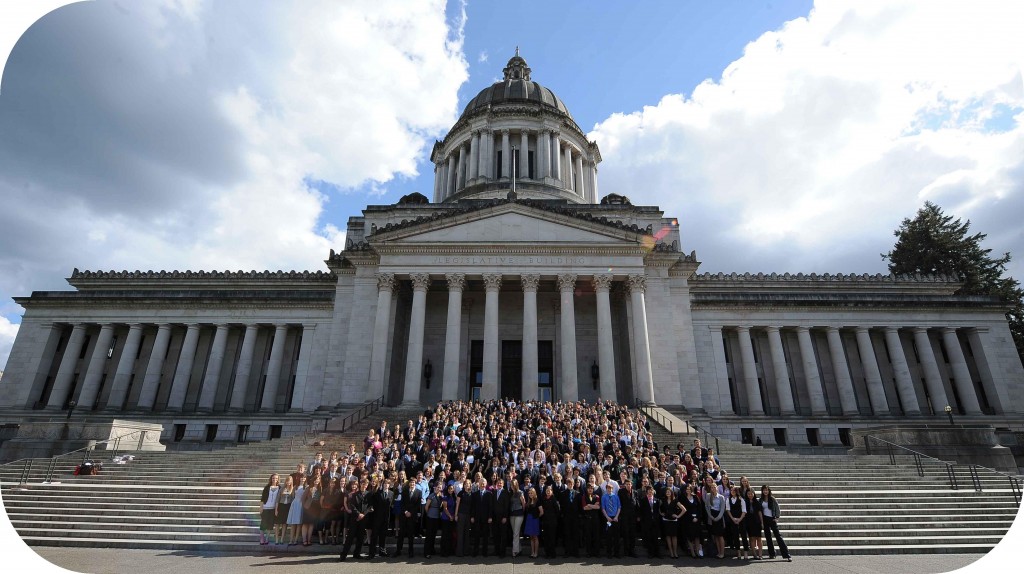Here is the third and final entry in a three-part series on the 66th Washington state YMCA Youth Legislature, which met last month in the state capital. Nearly 350 delegates traveled to the Capitol Campus for the event.
The nation’s first YMCA Youth Legislature met in the state of New York in 1936, at the height of the Great Depression when most people weren’t thinking much about civics. In 1947, folks from the Pacific Northwest Area Council of YMCAs traveled to New Jersey to check out the Garden State’s program.
The very next year, the Evergreen State’s premiere YMCA Youth Legislature was held. Washington’s 1948 student-lawmakers considered 21 Senate bills and 54 House bills sponsored by 150 young people from Washington’s “Hi-Y” and “Tri-Hi-Y” YMCA youth clubs. Walter Becker, a student from Spokane, was the inaugural Washington Youth Governor.

Several bills discussed at that first Washington youth-legislative session proposed that 18-year-olds be eligible to vote. Another measure would have authorized school buses to take students to after-school activities. Still another idea sought to change the state constitution to make education the first claim on general-fund revenue.
More than two decades after 18-year-old voting was discussed in the initial Washington State Youth Legislature, the 26th Amendment to the U.S. Constitution was adopted. The amendment prohibits states and the federal government from denying the right to vote to citizens 18 or older. The amendment won congressional approval in March 1971, and it was quickly ratified by the states later that year.
As in years past, the 2014 Youth Legislature considered a wide variety of proposals submitted by students from schools all across Washington. One of this year’s youth-session bills was concerned with the misbranding/false labeling of food. The proposal states:
“A food shall be deemed to be misbranded (1) if its labeling is false or misleading in any particular; or (2) if it is offered for sale under the name of another food; or (3) if it is an imitation of another food, unless its label bears, in type of uniform size and prominence, the word ‘imitation’ and, immediately thereafter, the name of the food imitated; or (4) if its container is so made, formed or filled as to be misleading; or (5) if any ingredient contains genetically modified organisms and is not labeled as such.”

